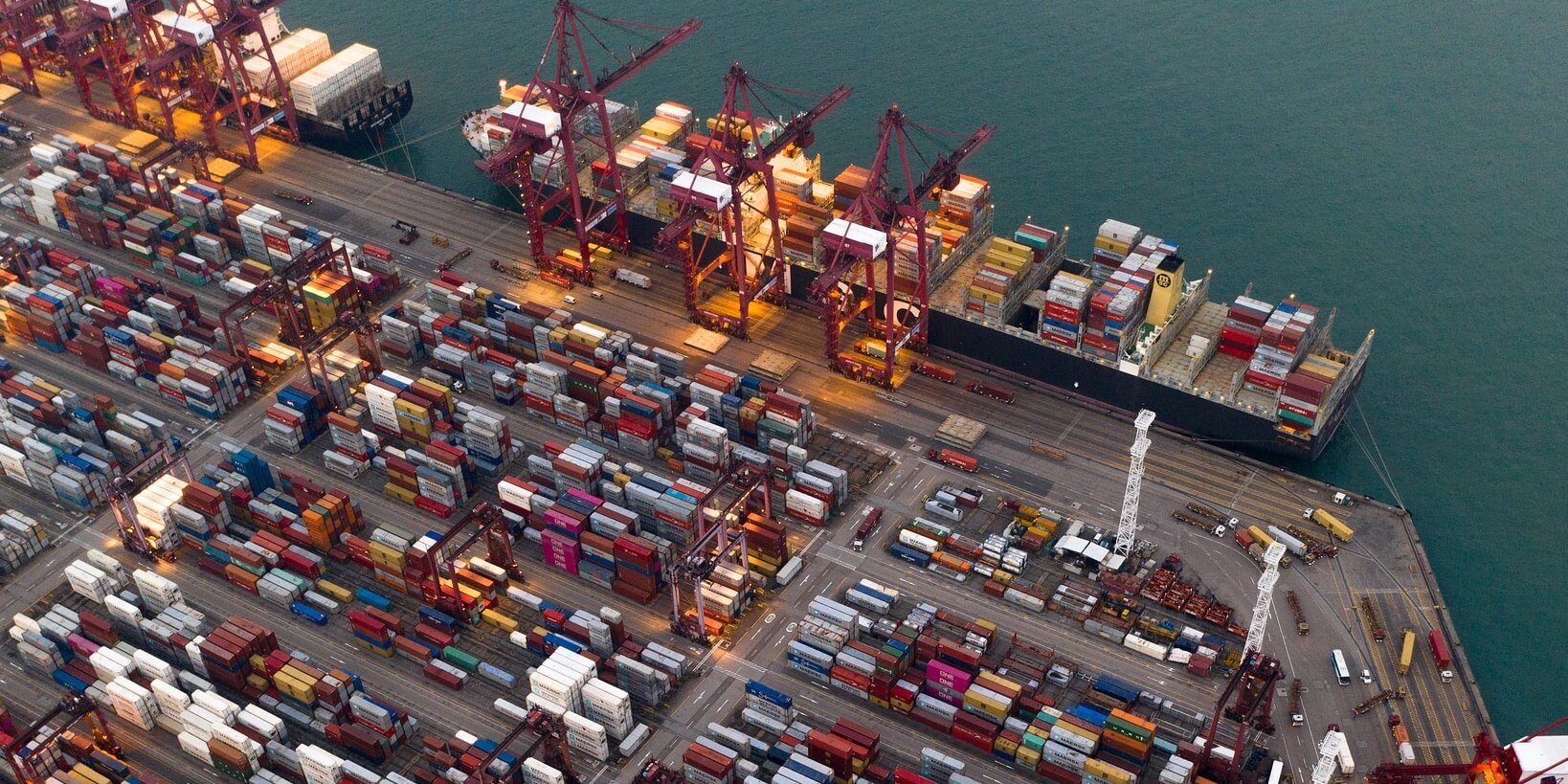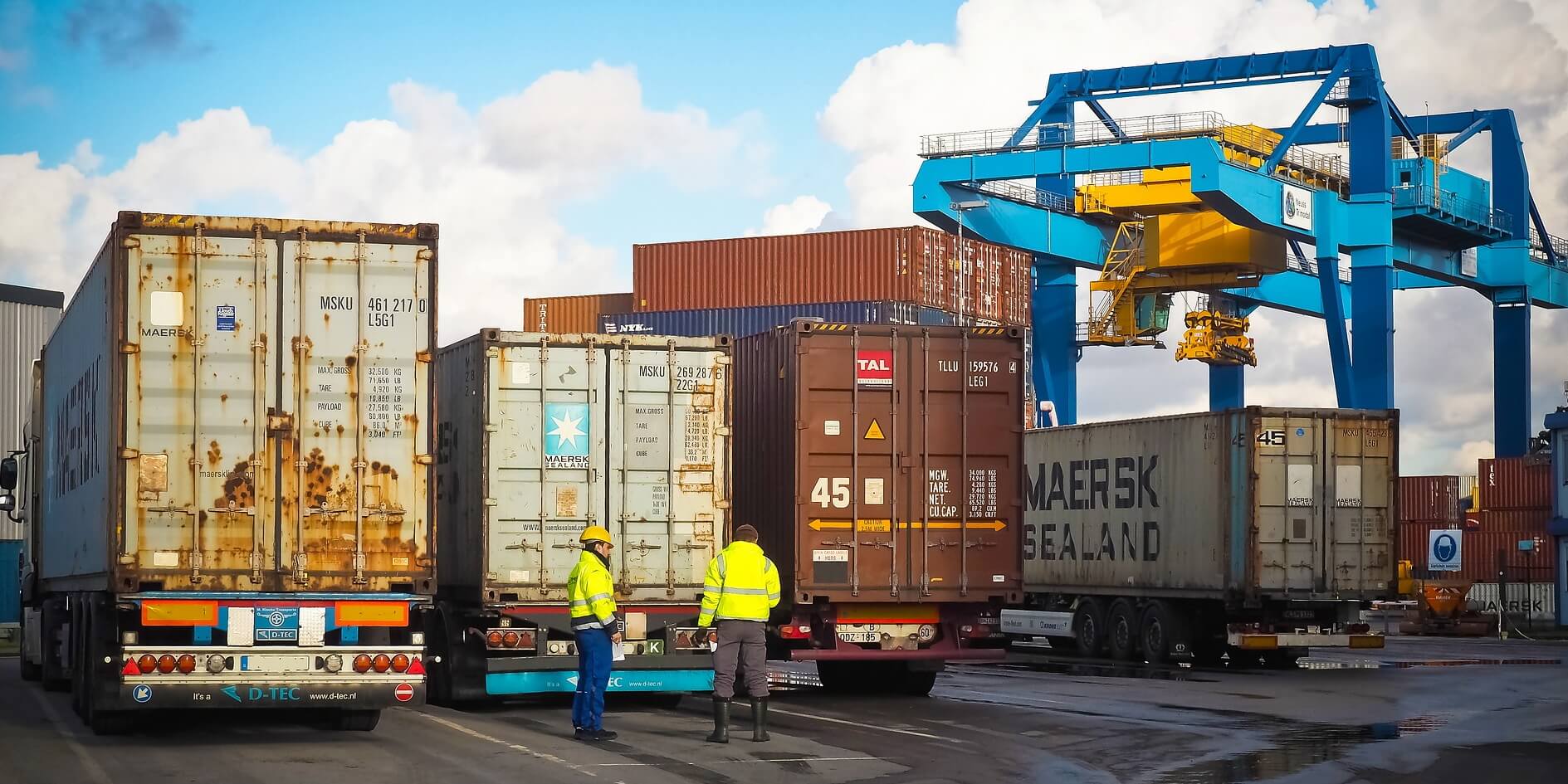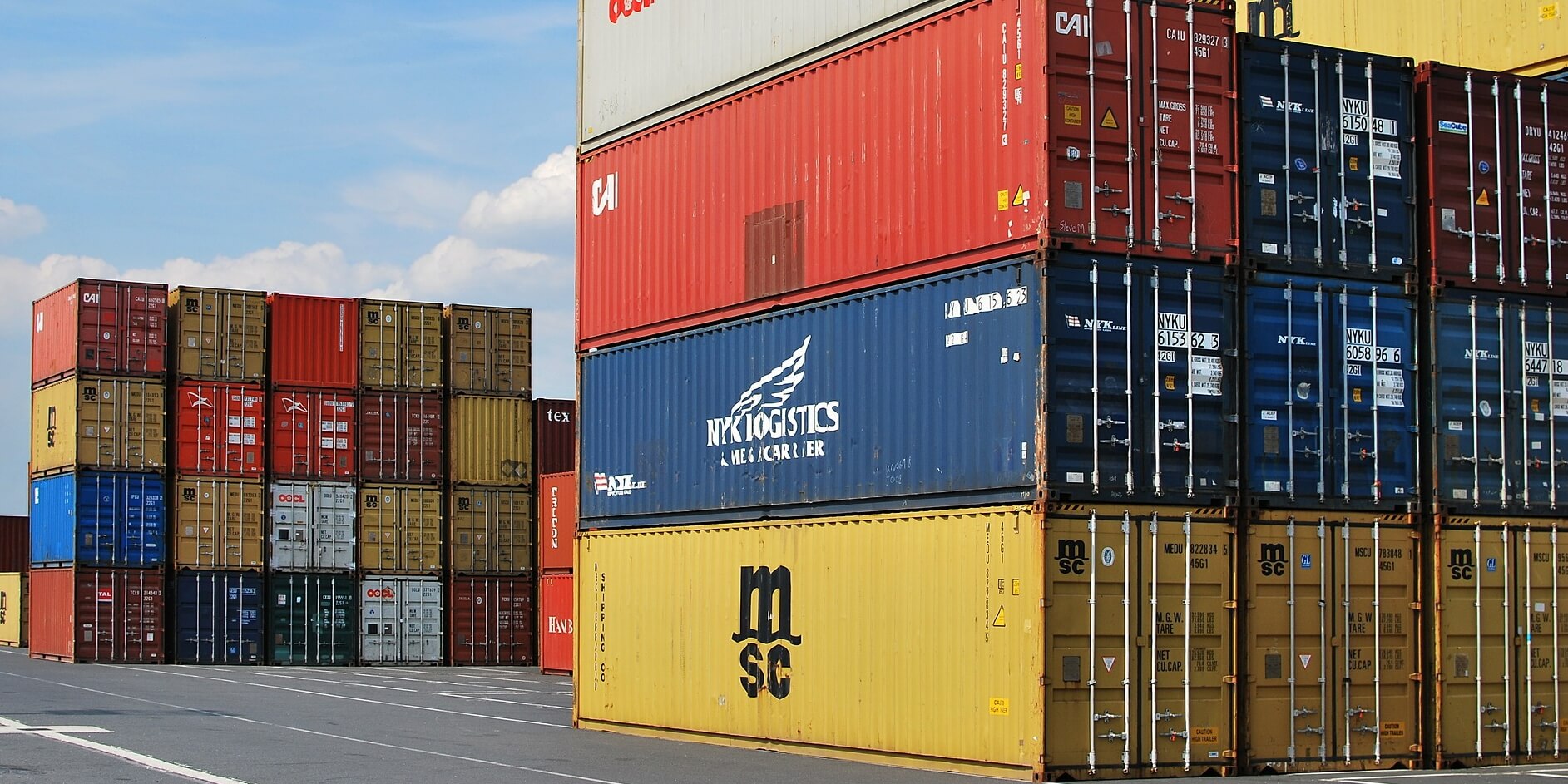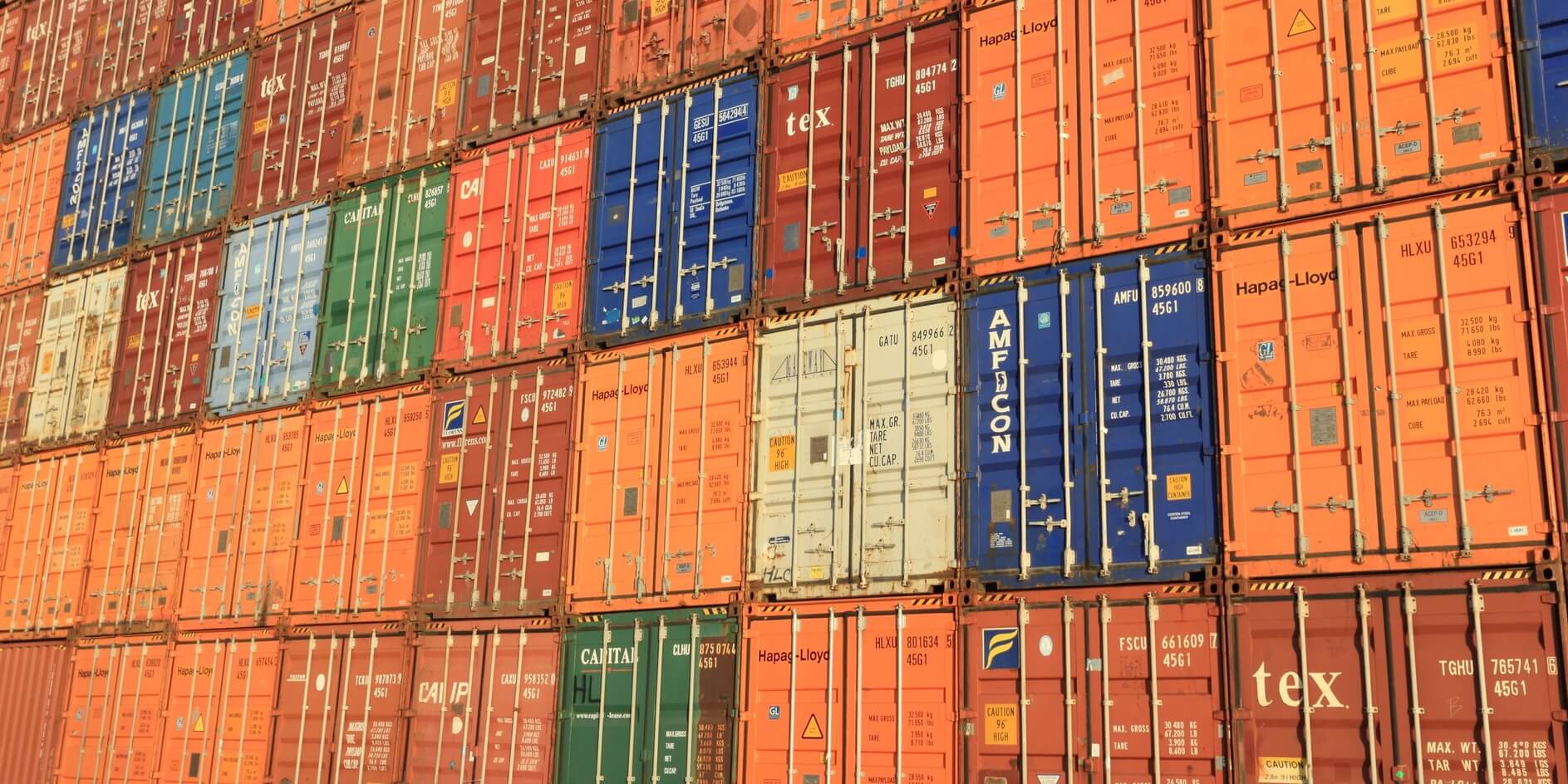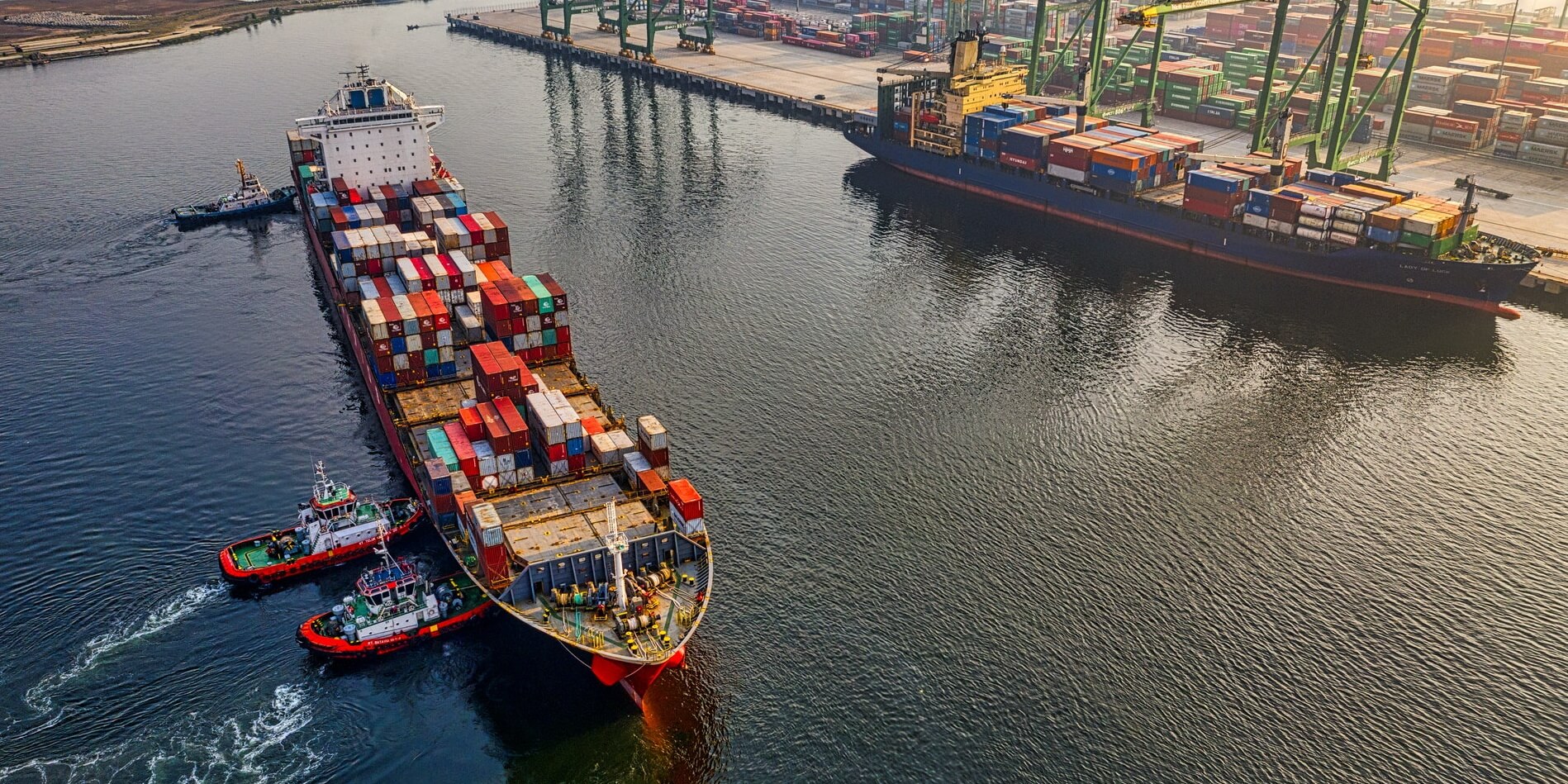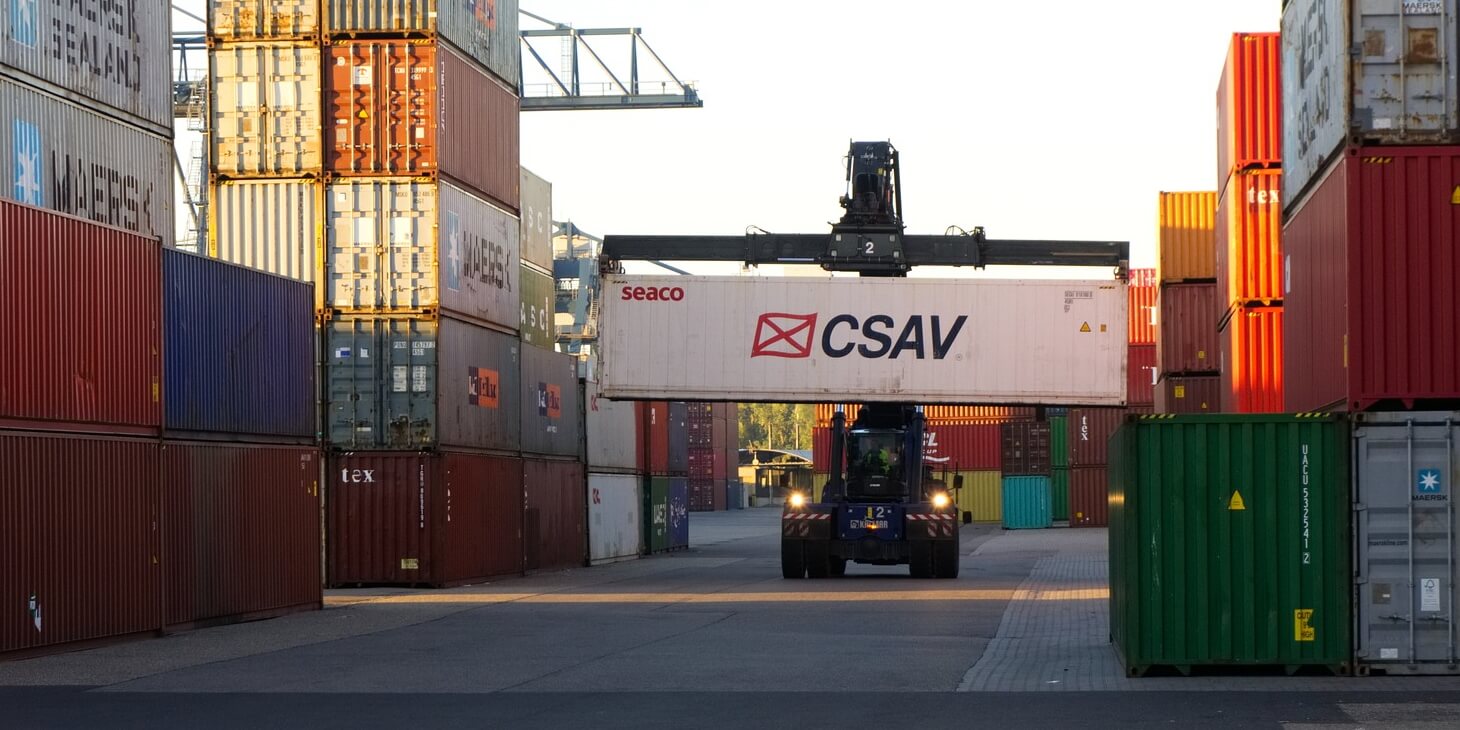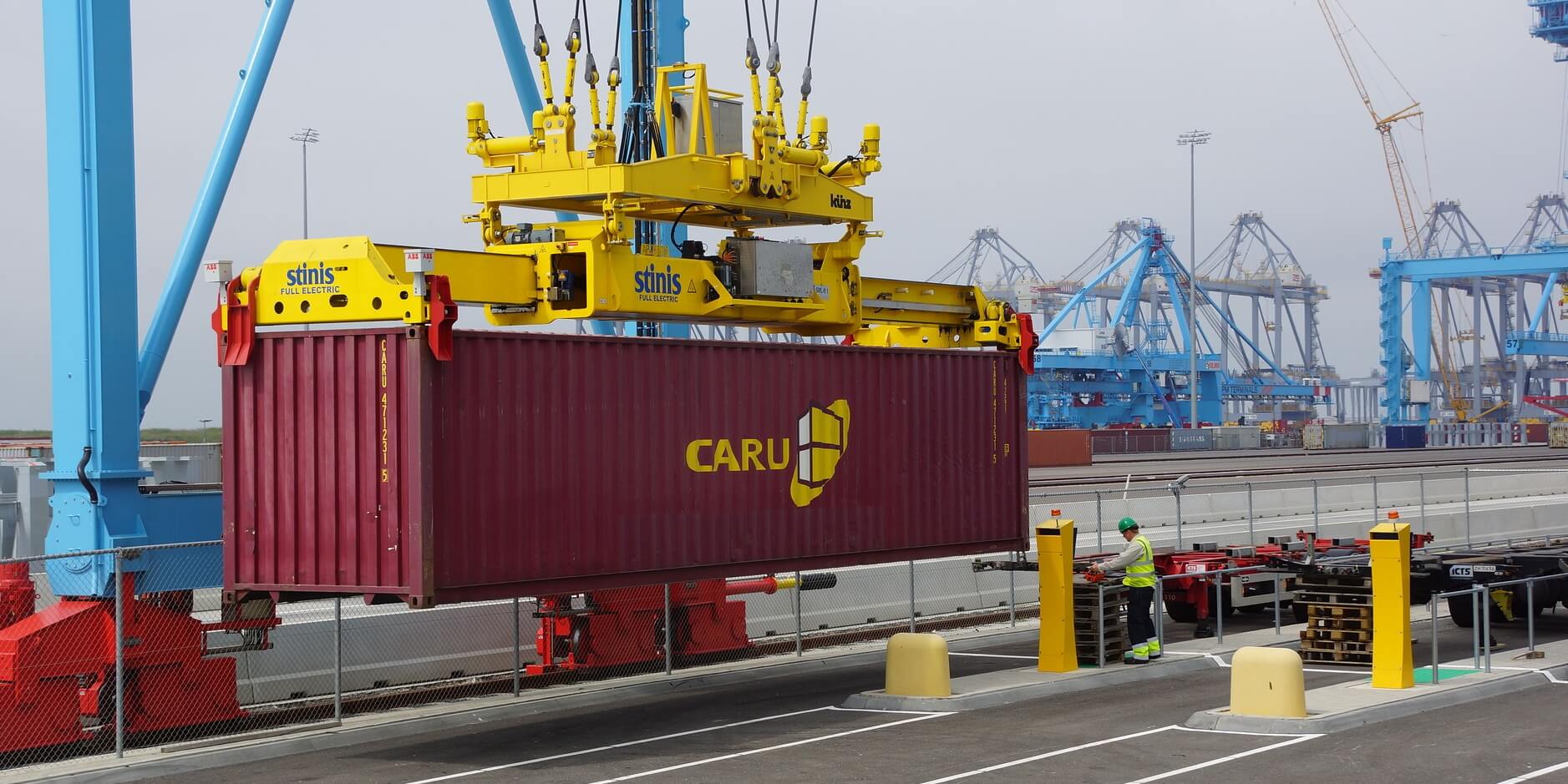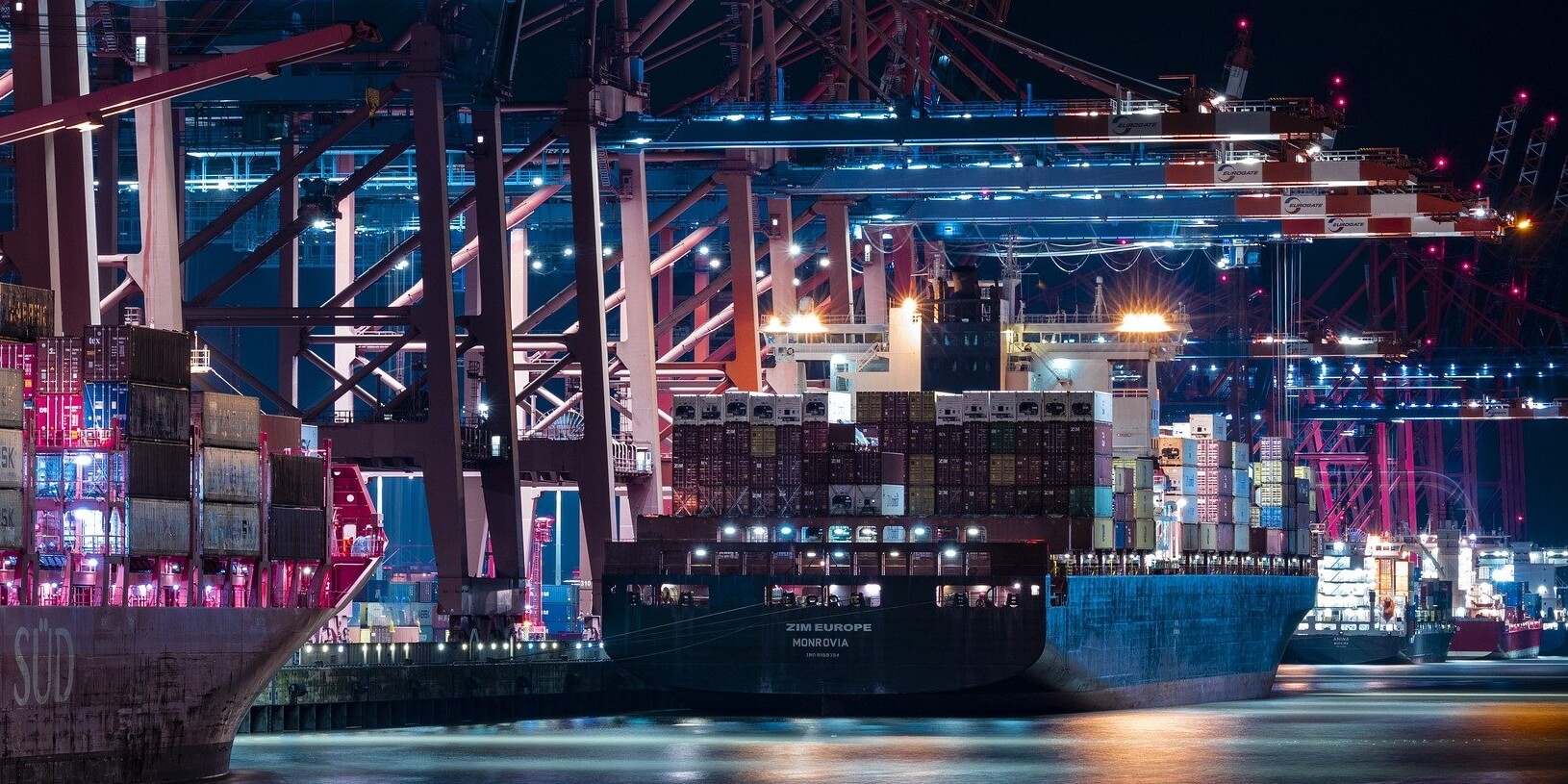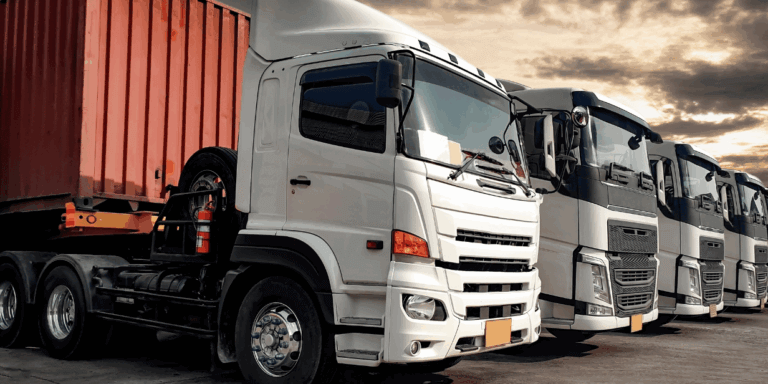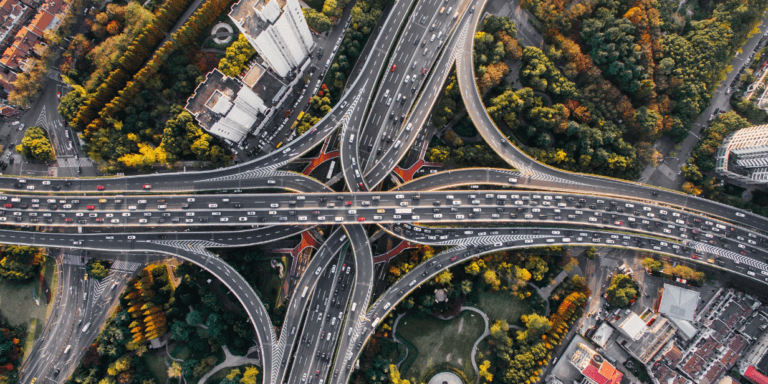Shipping containers aren’t just for hiding money in the movies. In fact, industrial shipping containers are the most common source of transportation for goods across the globe. It is estimated that around 80% of all goods are being transported by sea in shipping containers. Take a look around you. At least 2 things in front of you spent some time in a shipping container before you could enjoy them.
Since there are millions of shipping containers traveling across the ocean every day, a standardized code system is used for container identification. At Plate Recognizer, we’ve perfected our license plate identification technology for Optical Character Recognition or OCR for short.. Now that shipping container codes are digitalized in the cloud, you won’t have to rely on a tangible index that is going to save you time and money.
So, next time you’re trying to find out what container Riggs and Murtaugh are going to drive a car out of in the next Lethal Weapon, use Plate Recognizer’s shipping container OCR. Let’s look at shipping containers, why they’re so important, and why you’ll love our shipping container optical character recognition technology.
Beautiful, busy port terminal. Source: Pixabay.
What is a Shipping Container?
Shipping containers are one of the most essential transportation devices on the planet. The entire globe relies on them to receive raw materials and other goods. These containers are typically built out of steel and designed to withstand the elements. Before we get into the different types of shipping containers, it’s important to understand the history behind them.
A Brief History of Shipping Containers
In the 1830s, the first version of the shipping container was transported by railway or horses. It was soon discovered that railway travel was more efficient than the horse-drawn method. While this worked fine for domestic shipping, there wasn’t a good means of international shipping.
Containers were built out of wood which resulted in damaged goods and it was difficult to load and unload items. There was definitely not a container identification system, either. This method of transporting goods went on with several modifications and a lot of trial and error.
It wasn’t until 1956 that the first version of the modern shipping container was invented by a man named Malcolm MacLean. MacLean was not a seaside shipper himself, but a trucker on land. He noticed the difficulties both truckers and shippers experienced with loading and unloading containers that were all different sizes. So, he decided to take matters into his own hands and find a solution that would make international shipping easier and more efficient.
With no shipping experience, MacLean decided to purchase the Pan Atlantic Tanker Company and start experimenting. His efforts paid off when he came up with a standardized container for cargo shipping that could be used on both ships and trucks with ease. The first modern shipping container was sent off in April of 1956.
Men at work supervising shipping containers. Source: Pixabay.
Modern Shipping Containers
Since the 1950s, shipping containers have been used as the standard method of shipping goods and raw materials. Today, they come in an array of shapes and sizes that are regulated and given shipping container identification numbers.
- Dry Container – This is the most common type of shipping container you’ll see. They are used for transporting general cargo and typically come in sizes of 10, 20, and 40 feet. If you’re trying to find your stolen money, it’s probably in one of these.
- Flat Rack Containers – These have sides that can be folded down for heavy loads and oversized cargo or can be good for transporting heavy machinery, This type of shipping container does not have a lid, and items inside won’t be protected from the elements if the sides are folded down.
- Open Top Containers – These have removable tops and can be used to ship goods that might be taller than a shipping container is. This is also a good option if the items may be difficult to load and unload through a side door.
- Tunnel Container – This type of shipping container is similar to the dry goods container. It has openings on both ends and can make loading and unloading easier.
- Side Open Storage Container – This one is self-explanatory. The sides open for larger items that need to be loaded and unloaded this way.
- Refrigerated Containers – This type of container is also known as a reefer container. It is ideal for shipping goods that need temperature regulation such as produce and fish.
- Insulated Containers – Also known as thermal containers, this container also regulates temperature. These containers are good for items that will be shipped long distances and go through various climates and temperature change.
- Tanks – These are shipping containers typically used to transport liquids and are used as commonly as dry containers. You’ll usually see the two together on cargo ships.
- Half-height Containers – This type of container is half the size of a dry container and is usually used to transport raw materials like coal and other stones. The size of the container helps to manage weight with dense items, as well.
Shipping Containers all stacked up. Source: Pixabay.
How Many Shipping Containers are There in the World?
Since shipping containers are used for the majority of international shipping, there’s probably a lot of them, right? As of 2021, there are 17 million shipping containers spread across the globe, with over 6 million of them being actively used. With so many of them out there, it makes shipping container OCR all the more important.
According to Statista, between 1980 and 2020, the weight of goods transported by shipping container globally went from 11 million metric tons to 275 million metric tons. Now more than ever, shipping containers and container identification are essential.
Colorful array of shipping containers. Source: Pixabay.
How are Shipping Containers Distributed Across the Globe?
Shipping containers are owned by different companies, which is why shipping container OCR is so important. When containers are stacked together on ships, you’ll need to be able to identify them.
- Currently, 17% of the global fleet of shipping containers is operated by the Danish company APM Maersk.
- 16.9% are owned and operated by the Swiss-Italian shipping line Mediterranian Shg Co.
- The company with the third-highest amount of shipping containers is CMA CGM with 12.6%..
- Go here to see to see the full breakdown of shipping container distribution.
In 2021, over 31 million twenty-foot units of cargo passed through the Pacific Ocean. This makes the Trans-Pacific routes the largest shipping zone in the world. With so many shipping containers crossing the oceans, the International Standards Organization (ISO) assigns numbers for container identification.
Cargo ship leaving port. That’s a lot of containers to OCR! Source: Pexels.
Largest Shipping Ports in the World?
To understand why container identification is so important, we must look at the largest shipping container ports in the world. The majority of the major shipping ports are located in China. Shipping ports are measured in twenty-foot equivalent units, or TEUs instead of the exact number of containers. For reference, a 20-foot shipping container equals one TEU, a 40-foot container equals two TEU, and so on.
- Shanghai, China – 43.5 million TEU.
- Singapore – 36.6 million TEU.
- Ningbo-Zhoushan, China – 27.7 million TEU.
- Shenzen, China – 26.55 million TEU.
- Guangzhou Harbor, China – 23.19 million TEU.
- Busan, South Korea – 21.59 million TEU.
Ground crane moving a shipping container. Source: Pixabay.
How are Shipping Containers Identified?
Every single shipping container on the planet is required to have compulsory container markings. This is how container identification is done. They ensure efficient and safe transportation of goods. If you look at a shipping container, you will see markings on the outside typically on the door, and all of the numbers mean something.
Container Number
The container number is a sequence of 4 letters and 7 numbers displayed on every shipping container. Since they are traveling internationally, it’s important for them to be identifiable in a global database with shipping container OCR. It’s assigned by the ISO and consists of:
- Owner Code – The first 3 letters of the container identification number are the owner’s code. This signifies what company owns the container. The company logo is also typically painted onto the shipping container.
- Equipment Category Identifier – U stands for freight container. J is for an attached item such as a generator or other power unit. Z is a trailer or other device used to carry the shipping container.
- Check Digit – A check digit is a solo number that is the last digit of the container number. It’s used to verify that the number is accurate when using container identification. This number will be useful when using Plate Recognizer’s ContainerID system.
Registration Number/Serial Number
6 digits are located on the door of the shipping container decided by the owner.
ISO Code
This number will typically be located under the container number. It consists of 4 letters or numbers that tell you the dimensions of the container without having to take the time to measure it.
Operational Markings
This set of numbers will also be displayed on the shipping container door, and they include:
- Maximum Gross Weight – Most weight the container can carry.
- Container Weight – Weight of the container that should be used as a tare when weighing the contents.
- Net or Payload – The maximum weight a container can hold minus the weight of the shipping container itself.
CSC Plate
This number will be located on the lower left part of the unit door. Every shipping container that is used for international purposes must have this container identification. The CSC plate is used to verify that the container is safe to use and in good condition.
Truck transporting a shipping container. Source: Pixabay.
Plate Recognizer’s ContainerID
With 17 million shipping containers across the globe, they can be hard to keep track of. At Plate Recognizer, we want to make things easier for you. We’ve taken our license plate recognition technology and perfected it to work for container identification. Our ContainerID programming provides a seamless way to use photographs and access the API cloud.
It can be difficult to get a photo of a shipping container when they’re stacked by the dozens. Our container OCR algorithm can identify containers with blurry, dark, angled, and shadowy images. We could even capture a shipping code when Riggs is blasting out of the container and money flies through the sky!
All you need to do is send an image, specify the camera used, and timestamp if you have it. With that information, we can give you:
- Owner & Product Group Code – 4 letters of the container code will be shown.
- Registration Number – You’ll be able to see the 6 digits of the serial or registration number.
- Check Number– You’ll get the single digit check number to verify the container identification.
Integrating Container OCR
Integrating with our container identification API is very easy. We provide you with a few lines of code in several programming languages including Python, Javascript, Ruby, and more. Our digital system adheres to the BIC code digitalization terms, and you can check your codes instantly which will save you time and money.
Soon, we will have integrated SDK technology along with the API cloud to give you an even better shipping container OCR experience. To give you a better understanding of our product, head on over to our website. We want to provide you with a Container OCR free trial so you can see for yourself how helpful this technology is when it comes to container identification. The setup is fast, and you can be up and running scanning shipping containers within an hour. You can cancel anytime, and no credit card is required to sign up, so why not give it a try?
Large crane moving a shipping container. Source: Pexels.
Why Plate Recognizer for Shipping Container OCR
To sum it up, shipping containers are an essential part of the supply chain and aren’t going anywhere anytime soon. With 17 million of them existing on the planet, container identification is crucial to ensuring things run smoothly.
As we expand our horizons at Plate Recognizer, we want to make shipping container OCR quick and painless with our license plate technology. ContainerID can read that blurry picture you took in the rain and get you the information you need. If you’d like to test drive our ANPR software, you can do so for free by signing up for an account.
If you have further questions or want to start your free trial, contact us today.
Night scene of a shipping port with many shipping containers waiting for OCR! Source: Pexels.
